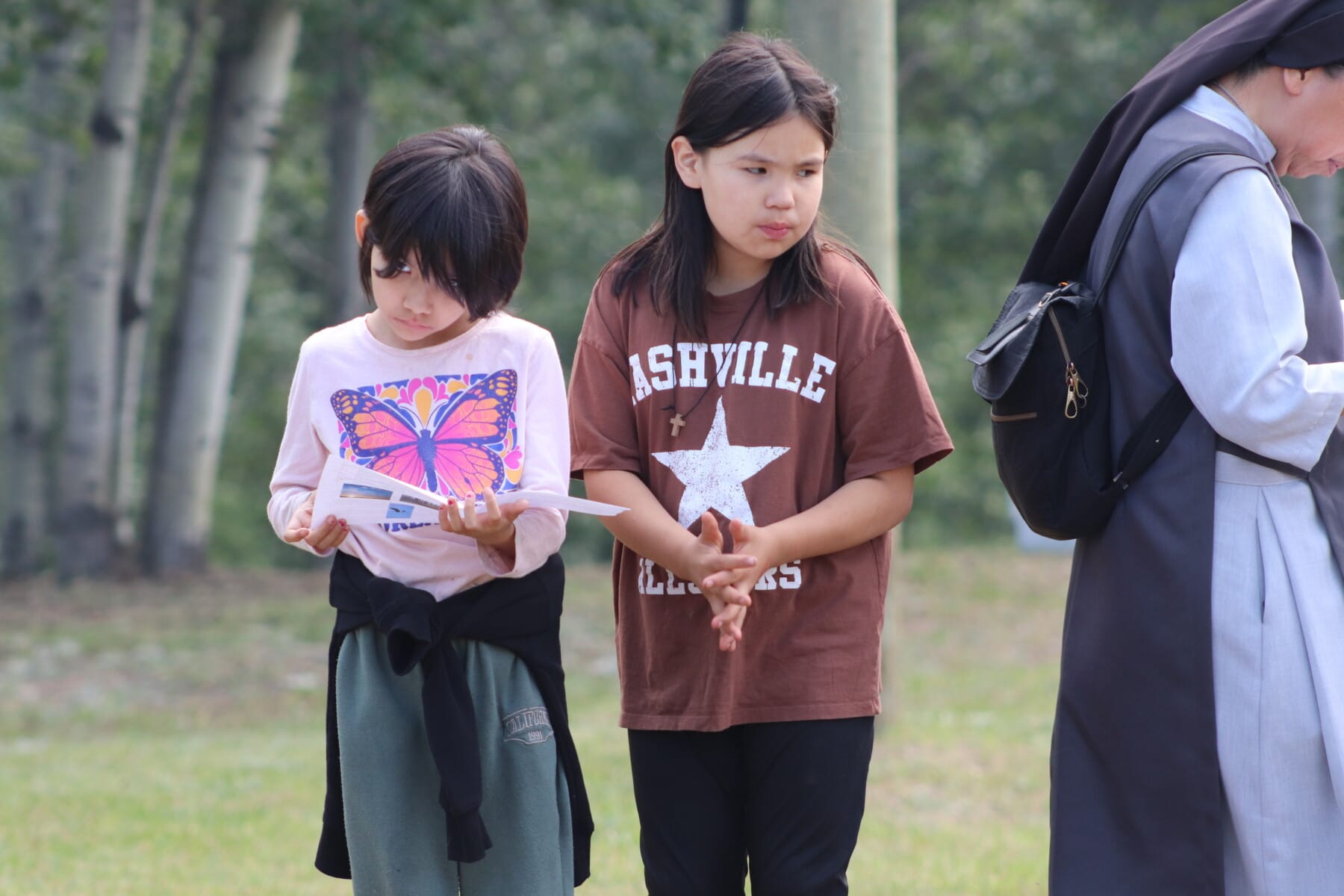
Heart of the community
The Eleske Pilgrimage continues as a way to honour God and ancestry
In its nearly 80-year legacy, the Eleske Pilgrimage is a generational link that continually bonds together the community’s past, present and future.
And in the lives it has changed, it’s a link that continually bonds the people to their Creator.
The Eleske Pilgrimage has been an annual celebration for the Beaver First Nations community since it began in 1945. The organizers of the pilgrimage today, some of whom have not lived in Eleske for many years, return to their home reserve each year to ensure it continues.
Particularly for the Habitant family, those who keep the Eleske Pilgrimage alive trace their lineage back to the very same people who started it. They are the descendants of the same men and women who helped the pilgrimage’s founder and visionary, Fr. Cesaire Mariman, OMI, carry the stones across the river to build the grotto shrine that remains the pilgrimage’s epicentre.

Elvina Habitant’s life and lineage is immensely intertwined with the pilgrimage. Both her parents and grandparents helped Fr. Mariman construct the grotto from 1944 to 1954. In later years, when the number of missionary priests and religious sisters dwindled in the area, Elvina’s parents took over much of its organization and preparation.
Today, Elvina has taken over those same duties with the help of her sister Gloria, her sons, and other locals like Susan and Jay Johnson, who share the same passion for continuing the Eleske Pilgrimage. For Elvina, it remains a way to stay connected to her community, to honour the legacy of her ancestors, and to replenish and recharge her own spiritual life.
“My parents and grandparents helped build this place, and we’ve looked after it for generations. My mom always ran it when I was young, so I always helped her,” Elvina recalled. “I’d be right beside her, helping her set up the altar, making sure the grass was cut, and she would always tell me to look after the graveyard – because they’re here, they’re attending as well, and you have to make sure they are also looked after.
“She taught me the value of hard work and to be happy about it; to be content that you honour God and you help the people. She would always say, ‘You grew up here, you know it, and you need to look after it.’ And I agree.”








…
Key to the success of the pilgrimage in those early years was the immense faith and witness of Fr. Mariman. He was the guiding light of not only the pilgrimage but the faith of the Eleske community in general. His name and face are displayed around the area, and he remains never distant from their memory. Elvina can still picture him dressed head-to-toe in the long, black cassock which he wore even on the most scorching hot of summer days.
“He was very faithful and he guided us; he showed us what to do,” Gloria said. “My favourite memory of Fr. Mariman is that no matter where you met him, you’d have to say some prayers with him, like the Our Father or the Hail Mary. It didn’t matter where you ran into him – in the grocery store, on the highway, out riding his bike – you’d have to pray a few prayers with him.
“Because of that, a lot of people avoided him,” she added with a laugh. “They would run away saying, ‘Here he comes, let’s go.’”
No matter the attendance now, Gloria hopes Fr. Mariman is looking down on those faithful few keeping the pilgrimage going, pleased that there are those doing what they can to keep alive the pilgrimage he poured his heart and soul into.
“It was so different when he left, so different. It was such a great loss. There was no one who could take his place here,” said Gloria. “He learned the Beaver language, and he fit right into the community. He did a lot for the church here, and for that we will always be grateful.”

Elvina and Gloria’s father helped plant the tree that now towers tall over the Eleske cemetary, where Fr. Mariman is also buried. This tree was planted to commemorate the completion of the grotto back in the mid-1950s. Immediately after it was planted, Fr. Mariman had asked the people to stay with him for an hour to pray, especially for the success and endurance of the pilgrimage.
This tree, while still standing out, taller than every other tree in the area, has become somewhat of a tragic sight, as its branches have all turned a decaying brown and its trunk rots. This is due to this once lively, prosperous tree being struck by lightning nearly four years ago. According to some locals, this tree was struck by lightning the very day the news came out about alleged unmarked graves in Kamloops.
This is only an excerpt. Read the full story in the September 2024 edition of Northern Light
